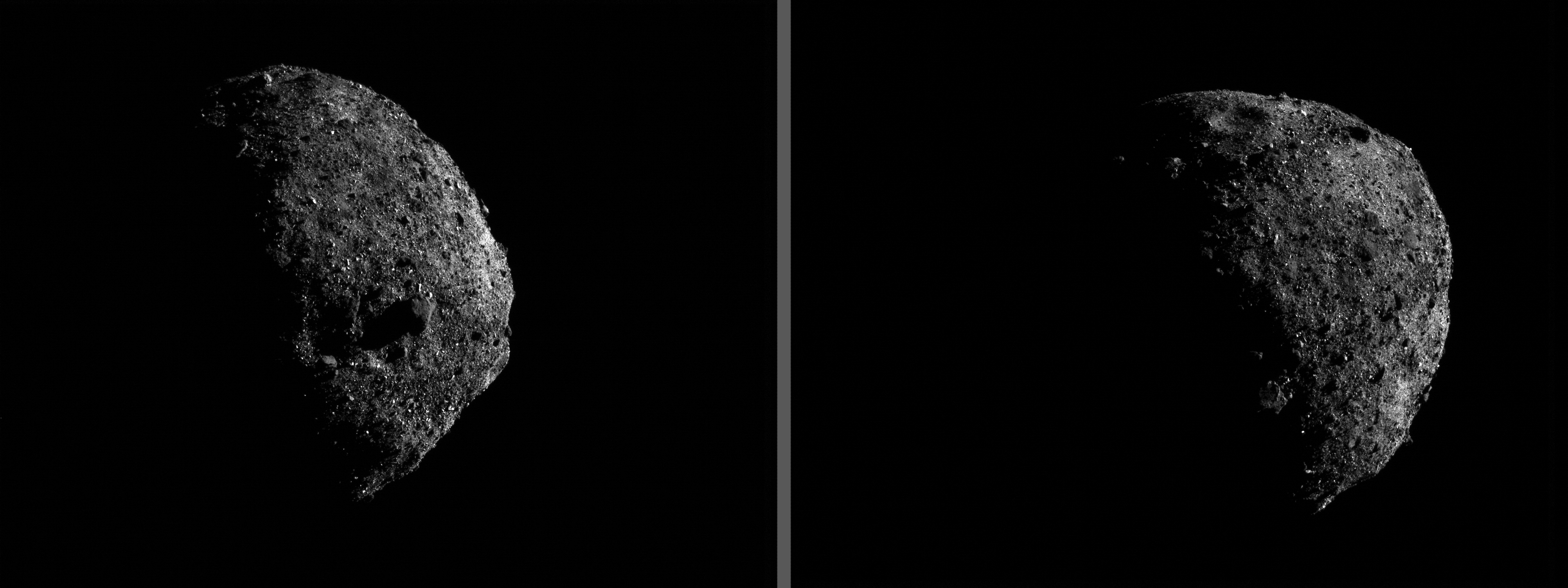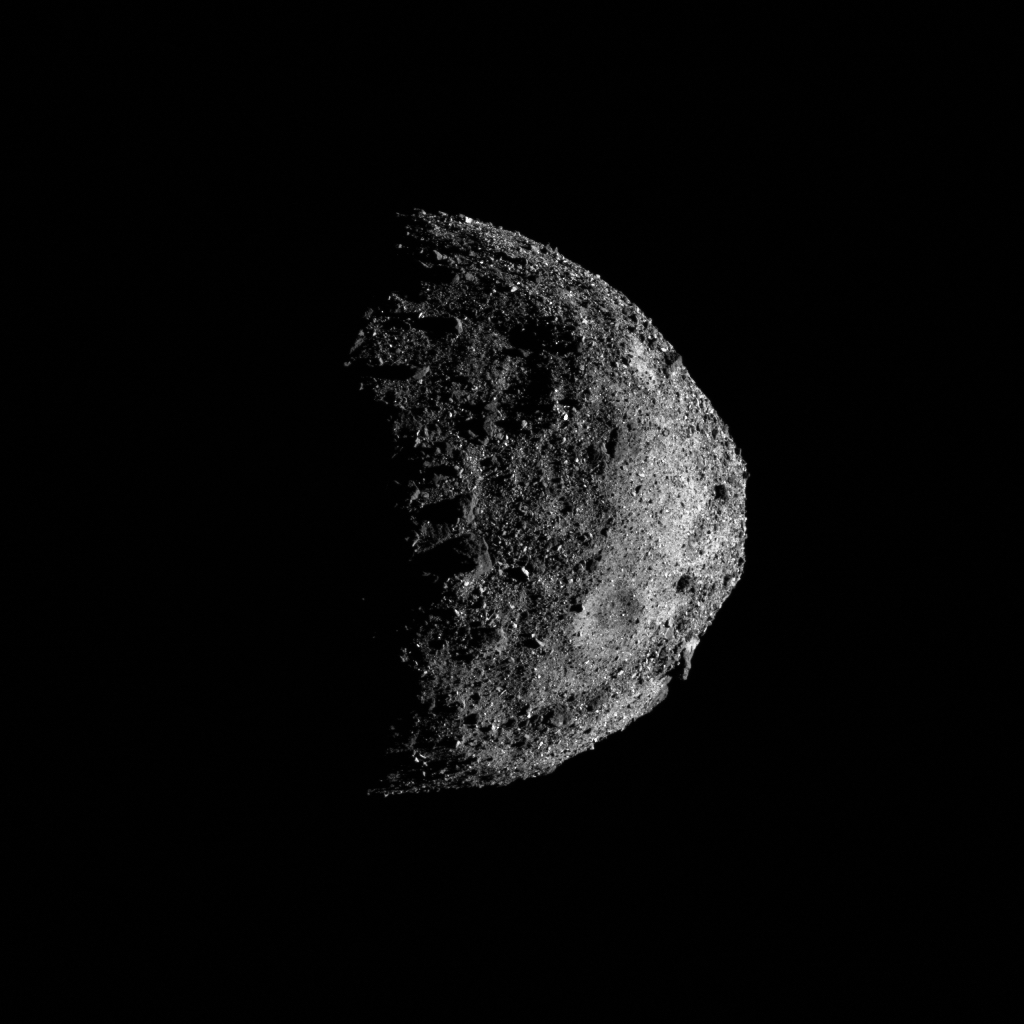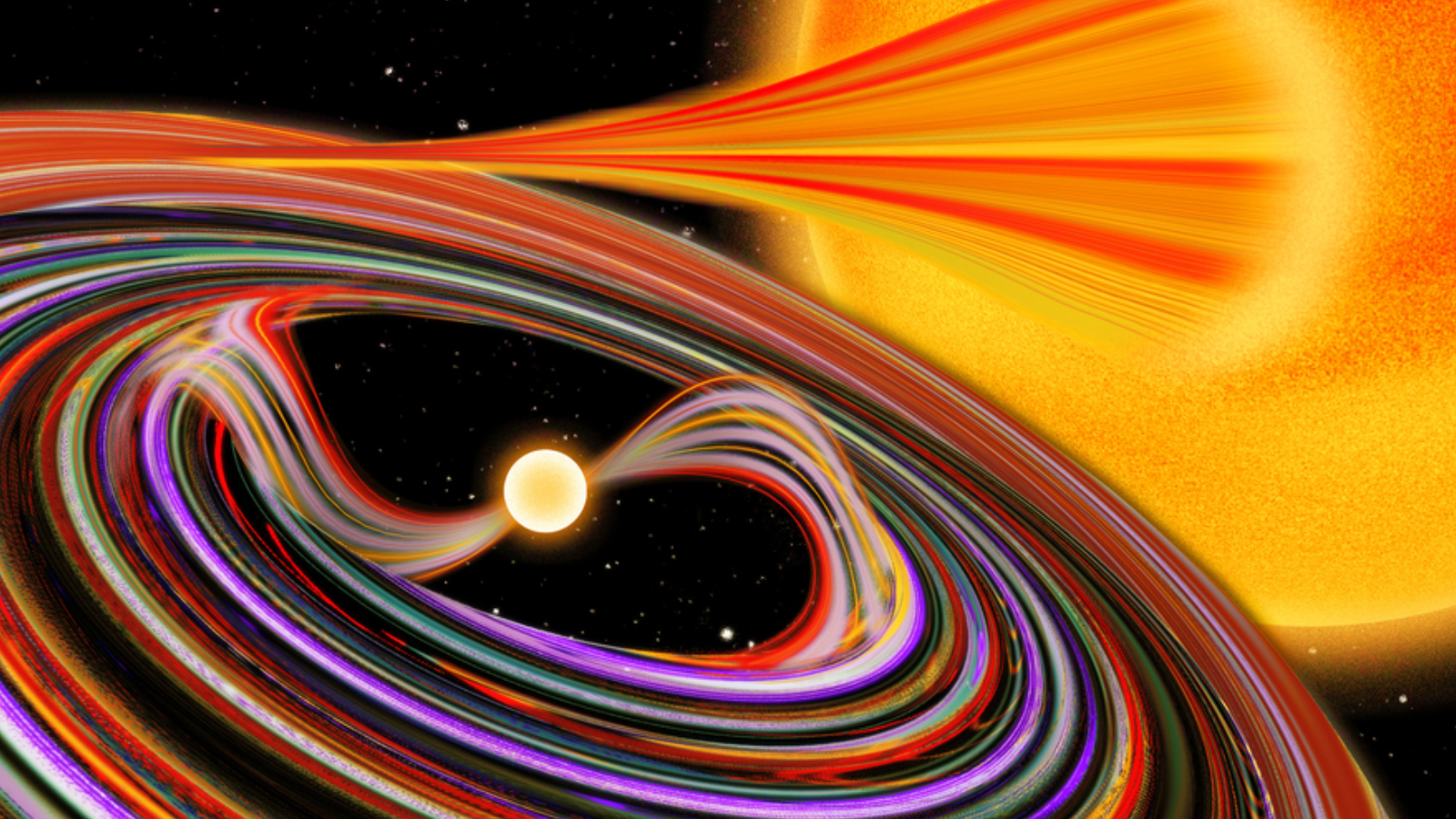NASA Probe Snaps 1st Photos from Just a Mile Above Asteroid Bennu and the View's AMAZING!

NASA's OSIRIS-REx mission is orbiting an asteroid closer than any spacecraft has ever orbited a body — and it shows in an incredible pair of photographs that the team released yesterday (Jan. 24).
The spacecraft slipped into orbit around the asteroid, called Bennu, on Dec. 31, after the team carefully mapped the object to design a safe path for the probe. That was a challenge, since Bennu is the smallest space rock that's ever been orbited.
But the dangerous maneuver has paid off. OSIRIS-REx is orbiting just about 1 mile (1.6 kilometers) above Bennu's surface, giving its cameras an incredible view of the asteroid's rocky surface. Scientists believe that rugged shape is the result of Bennu having formed from a bunch of rubble loosely clumped together. [The Greatest Asteroid Encounters of All Time!]
The two images shown here were taken by an instrument called NavCam, which is the main camera the team uses to steer the spacecraft. The images, snapped on Jan. 17, show Bennu's south pole.
Another recently released image of the south pole of Bennu, taken while the spacecraft was preparing for orbit, was captured at a distance of about 8 miles (12 km) but still gives scientists a detailed view of the surface topography.
This photo was captured by a different camera on the spacecraft, called MapCam, which is one of the probe's science instruments rather than a dedicated navigation camera. Its main purpose is to photograph the asteroid in color and help the team select where it will collect a sample to bring home to Earth for analysis.
The sampling process won't begin until mid-2020, after the team has had plenty of time to study Bennu from all angles and make an informed decision about where to collect the sample — informed in part by detailed observations of the surface boulders that could interfere with sampling equipment.
Breaking space news, the latest updates on rocket launches, skywatching events and more!
Email Meghan Bartels at mbartels@space.com or follow her @meghanbartels. Follow us @Spacedotcom and Facebook. Original article on Space.com.

Meghan is a senior writer at Space.com and has more than five years' experience as a science journalist based in New York City. She joined Space.com in July 2018, with previous writing published in outlets including Newsweek and Audubon. Meghan earned an MA in science journalism from New York University and a BA in classics from Georgetown University, and in her free time she enjoys reading and visiting museums. Follow her on Twitter at @meghanbartels.

